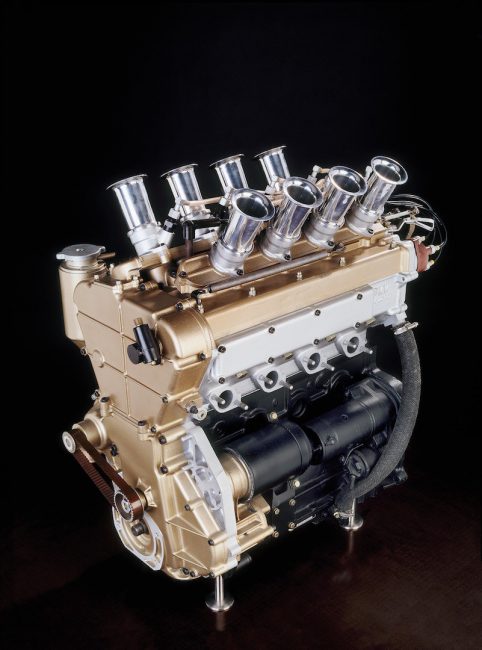
BMW N46B20 engine
Content
The history of BMW engines begins long before the beginning of the 21st century. The N46B20 engine is no exception, it is a classic in-line four-cylinder unit, utterly improved by the Bavarians. The origins of this motor date back to the beginning of the 60s of the last century, when the truly revolutionary motor called the M10 saw the light. The main distinguishing features of this unit are:
- the use of not only cast iron, but also aluminum in order to reduce the weight of the engine;
- "diversification" of the intake and exhaust tracts on different sides of the motor;
- the location of the internal combustion engine in the engine compartment with a slope of 30 degrees.
 The M10 motor has become one of the trendsetters for the "medium" volume (up to 2 liters - M43) and high efficiency. Since then, the line of powerful in-line engines, which are equipped with most BMW models, begins. Unique in its characteristics, at that time, the motor proved to be very good.
The M10 motor has become one of the trendsetters for the "medium" volume (up to 2 liters - M43) and high efficiency. Since then, the line of powerful in-line engines, which are equipped with most BMW models, begins. Unique in its characteristics, at that time, the motor proved to be very good.
But the Bavarians were not enough, and with their inherent perfectionism, they continued to improve the already successful engine design. Not afraid to experiment and striving for the "ideal", many variations of the M10 engine were made, they all differed in volume (from 1.5 to 2.0 liters) and fuel systems (one carburetor, dual carburetors, mechanical injection).
Further - more, the Bavarians, not having had enough time to play with this engine, decided to resort to improving the cylinder head by increasing the flow sections of the inlet / outlet channels. Then the cylinder head with two camshafts was used, however, according to the designers, this decision did not fully justify itself and did not go into production.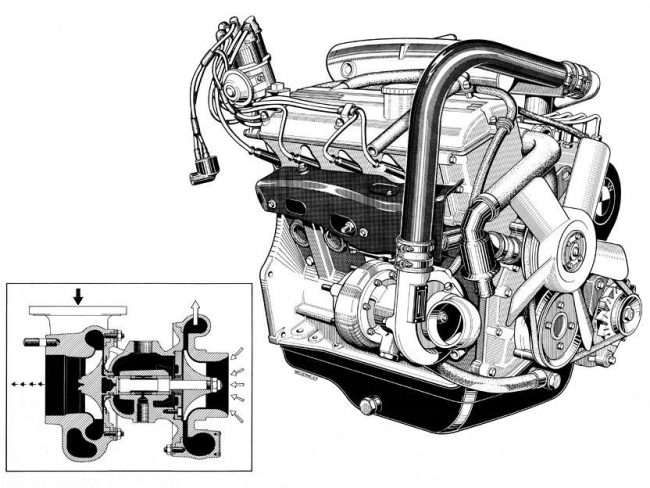
It was decided to opt for an in-line four-cylinder engine with one overhead camshaft and two valves per cylinder. From this volume, the engineers managed to remove up to 110 hp.
In the future, a series of motors "M" continued to improve, which resulted in a number of new units, they received the following indices: M31, M43, M64, M75. All these motors were created and developed on the M10 cylinder block, this continued until 1980. Subsequently, the M10 replaced the M40 engine, aimed more at civilian trips than at fast speed races. The main difference from the M10 is a belt, instead of a chain in the timing mechanism. In addition, the cylinder block got rid of some typical "sores". The power of the engines made on the M40 did not increase much, the output was only 116 hp. By 1994, the M40 engine gave way to a new engine - the M43. From the point of view of the design of the cylinder block, there are not so many changes, since most of the technological innovations have affected environmental friendliness and reliability systems, the engine power has remained the same - 116 hp.
The history of the creation of the motor, from N42 to N46
Due to the fact that you cannot describe the entire long and rich history of in-line four-cylinder engines in a nutshell, let's move on to more specific differences between the N42 and N46 engines. The latter is much more interesting for us, because it was produced until 2013, which means that a large number of cars equipped with this power unit are traveling in the territories of the Russian Federation and the CIS. Let's analyze the differences between the N46 and its predecessor N42.
So, the ICE marked N42 (and its variations N43, N45) in 2001 replaced the M43. The main technological difference between the new engine and the M43 was the appearance of two camshafts in the cylinder head (cylinder head), variable valve timing systems (VANOS) and variable lift valves (Valvetronic). The range of N42 power units is small and consists of only two models - N42B18 and N42B20, these internal combustion engines differ from each other in fact only in volume. The numbers 18 and 20 in the N42 index indicate the volume of the engine, 18 - 1.8 liters, 20 - 2.0 liters, power - 116 and 143, respectively. The range of cars equipped with these engines is quite small - only the BMW 3-series.
We sorted out the history of the creation and evolution of in-line four-cylinder engines a little, now let's move on to our hero of the occasion - the engine with the N46 index. This unit is a logical continuation of the N42 motor. When creating this internal combustion engine, Bavarian engineers took into account the experience of building the previous unit, collected a lot of statistics and presented to the world essentially the same old engine, but with a lot of changes.
The final factory decision was the N46B20 motor, it was he who served as the basis for the creation of other variations of the N46 motor. Let's take a closer look at the founder of the series - N46B20. This motor is still the same "classic" design - an in-line four-cylinder internal combustion engine, with a volume of 2 liters. Main differences from its predecessor:
- improved durable crank design;
- redesigned vacuum pump;
- roller pushers made of more durable materials with a different profile;
- modified design of balancing shafts;
- The ECU has a built-in Valvetronic valve control module.
Specifications ICE BMW N46B20
The logical continuation of the N42 in the form of the N46B20 engine turned out to be very successful. The new motor was significantly redesigned, based on the statistics of repairs of its predecessor, the engineers improved the problem areas in the engine, although it was not possible to completely get rid of the typical “sores” inherent in BMW engines. However, this is a common thing for the BMW brand, but more on that later.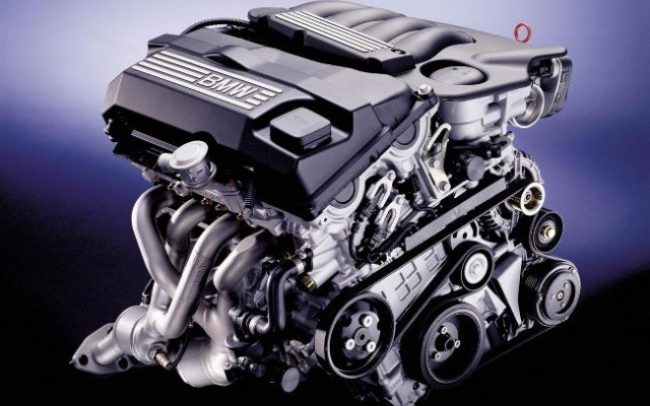
ICE BMW N46B20 received the following specifications:
| Year of manufacture of the power unit | From 2004 to 2012* |
|---|---|
| engine's type | Petrol |
| The layout of the power unit | In-line, four-cylinder |
| Motor volume | 2.0 liter** |
| Supply system | Injector |
| Cylinder head | DOHC (two camshafts), timing drive - chain |
| Internal combustion engine power | 143hp at 6000 rpm*** |
| Torque | 200Nm at 3750*** |
| Material of cylinder block and cylinder head | Cylinder block - aluminum, cylinder head - aluminum |
| Required fuel | AI-96, AI-95 (Euro 4-5 class) |
| Internal combustion engine resource | From 200 to 000 (depending on operation and maintenance), the average resource is 400 - 000 on a well-maintained car. |
It is also worth making remarks regarding the data indicated in the table:
* - the year of manufacture is indicated for the line of engines based on the N46 cylinder block, in practice, the internal combustion engine (basic modification) N46B20O0 - until 2005, ICE N46B20U1 - from 2006 to 2011 depending on the model;
** - the volume is also averaged, most of the engines on the N46 block are two-liter, but there was also a 1.8-liter engine in the line;
*** - power and torque are also averaged, because on the basis of the N46B20 block, there are many modifications of the internal combustion engine with different power and torque.
If there is a need to know the exact marking of the engine and its identification number, then you should rely on the diagram below.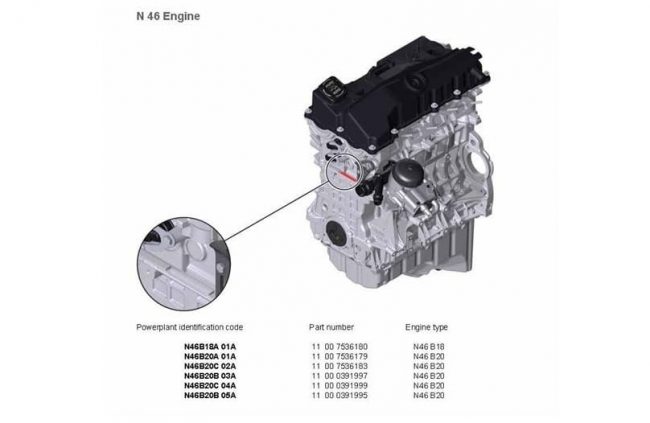
Reliability and maintainability of BMW N46B20 engines
There are legends about the reliability of the “legendary” BMW engines, someone desperately praises these units, others scold them mercilessly. There is definitely no unequivocal opinion on this matter, so let's look at these motors based on statistics and drawing logical parallels.
So, one of the common causes of failure of units based on the N46 block is overheating. The story with overheated and "behaviored" heads (cylinder head) continues from the engines produced in the 80s. On machines with the N46 block, this is not so bad, but there is a risk of engine failure. And if the predecessor (N42) suffered from overheating very often, then things are better with the N46. The thermostat opening temperature is lowered, but the engine is still afraid of low-quality oil, therefore, the use of bad fuels and lubricants for BMW cars is tantamount to certain death, especially with frequent races in a “racing” rhythm. On an overheated engine, the cylinder head inevitably “floats”, large gaps appear between the cylinder block and the cylinder head, the coolant from the cooling jacket enters the cylinders, and the car “arrives” on the capital.
The motors on the N46 block are equipped with variable valve timing systems (VANOS), this is a technologically complex unit, and if it breaks down, repairs can cost a tidy sum (up to 60 rubles). malfunction is catastrophically high oil consumption. This usually happens on runs over 000 km. In the event of a "zhora" of oil, first of all, one should sin on the valve stem seals, their replacement will cost about 70 - 000 rubles, depending on the model of the machine and service.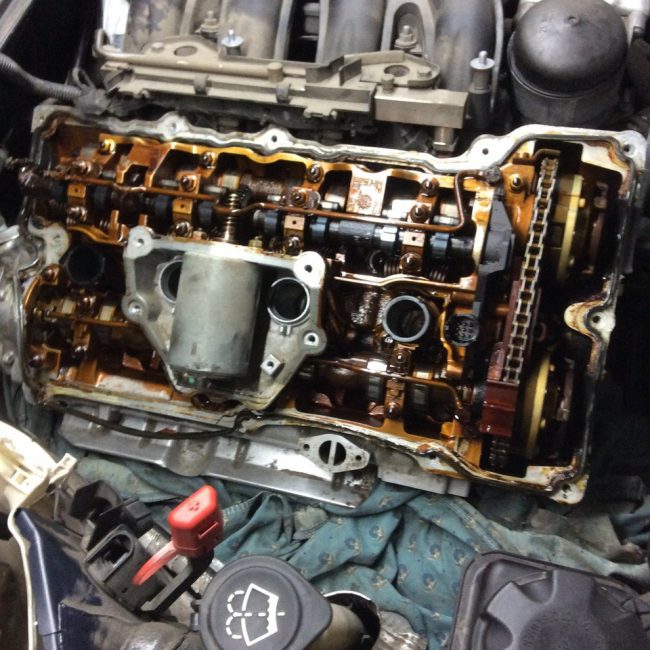
This problem should not be delayed, because this is fraught with serious engine damage!
Also, do not forget about the chronic oil burn, ~ up to 500g of oil per 1000km, depending on the condition of the engine. The oil level should be closely monitored and topped up if necessary.
Another nuance on engines built on the basis of the N46B20 is the timing chain mechanism, with all the consequences. Experienced craftsmen urge to monitor the timing unit on runs over 90 km, especially for those who like to drive, calm riders should pay attention to this on runs over 000 km. It often happens that the chain is stretched, and the tensioning mechanisms made of plastic become unusable. As a result, a significant decrease in traction characteristics, in some situations, the noise of the chain itself is added to this.
Quite often, owners can be annoyed by a “sweating” vacuum pump. During operation, this problem almost does not manifest itself, but at the next maintenance, you should definitely pay attention to the “vacuum tank”. If the smudges are strong, then you should purchase the original pump repair kit and repair it, of course, from qualified craftsmen. Also, among the frequent problems are unstable idling and a “long” start of the engine, the reason is the crankcase ventilation valve. It should be changed on runs over 40 - 000 km.
Nuances
BMW is not an easy car, both in terms of maintenance, as well as in terms of appearance and driving performance. Aggressive design, well-tuned suspension, engine with a “smooth” torque shelf. The Bavarians are still not very fond of volumetric engines, complaining about their heavy weight. The pursuit of perfect taxiing and manufacturability is commendable. Only now, unfortunately, driving and maintaining BMW cars in the countries of the Russian Federation and the CIS comes at a pretty penny. And it would be nice if expensive maintenance was rarely required, but this is not about BMW.
The main nuance, problem and pain of domestic BMW owners is low-quality fuel, it often brings a lot of headaches to owners of German foreign cars. And if you add cheap oil to this and the prospect of a long downtime in traffic jams, you get serious harm to the motor. The scheduled oil change period is once every 10 km, but experienced car owners will boldly say - change every 000 - 5000 km, it will only get better! It is not necessary to fill in the original, it is allowed to use similar oils, but of good quality. N7000B46 “eats” oils with a viscosity of 20W-5 and 30W-5 well, and the required volume when replacing will be exactly 40 liters.
BMW engines love frequent maintenance and the N46B20 is no exception, it has enough power for confident driving in urban conditions, and with high-quality fuel and oil can withstand long-term loads "in the red zone". Of course, no one talks about long races, but aggressive maneuvering in the city or highway does not harm the engine. The main thing is to monitor the temperature!
SWAP, contract and tuning
Often, BMW owners, seeking to get more power and save on maintenance or repair of the current engine, resort to such a procedure as swapping the engine for another. One of the common options for a swap is the Japanese engine of the 2JZ series (there are many modifications of this engine). The main motive for replacing the native engine with a Japanese one are:
- high power;
- inexpensive and productive tuning for this motor;
- great reliability.
Far from all car owners decide to take such a step as a swap, because the cost of replacing the motor and its subsequent tuning is in the region of 200 rubles. An easier option for a swap is to install the most powerful unit (and its subsequent tuning) based on the N000 block, it is the N46NB46 with a power of 20 hp. The difference between such a motor and the N170B46 lies in a different cylinder head cover, exhaust system and ECU system. This option is more rational, because the purchase and installation of this motor will not require a large amount of costs. The disadvantages of such a swap include the former "sores" of BMW engines. Usually, this method is resorted to when the current motor has broken down and a major overhaul or replacement with a contract unit is required.
In the event that a repair is necessary, then you should look for a service with qualified specialists. Replacing a motor with a contract one is comparable to buying a “pig in a poke”, because there is a big risk of acquiring an overheated motor or a unit with serious wear due to a problem associated with valve stem seals.
So, if your motor is not overheated, and there were no problems with valve stem seals, then you can safely overhaul the engine, but only in a proven service from qualified specialists!
If we talk about tuning engines based on the N46B20 block, then this is not so rosy. A significant increase in power (from 100 hp) will require large investments and refinement of the remaining components of the car. In general, models with engines on the N46 block are rarely tuned due to the complex design and the high cost of tuning kits and their settings. The best solution here is to swap the motor to another. But a slight increase in power does not harm these engines in any way, as a large number of car owners and inexorable statistics are convinced, the main improvements are:
- changing the firmware (CHIP tuning) to a more powerful and balanced one;
- direct exhaust installation without catalytic converters;
- installation of a filter of zero resistance and / or a throttle valve of a larger diameter.
Vehicles with BMW N46B20 engines
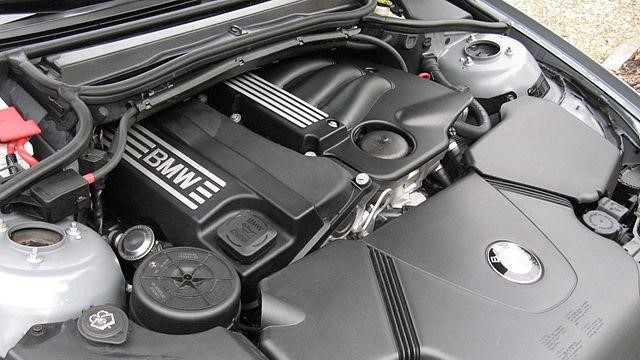 A large number of BMW cars were equipped with these engines (and their modifications), as a rule, these units were installed in budget versions of cars:
A large number of BMW cars were equipped with these engines (and their modifications), as a rule, these units were installed in budget versions of cars:
- modification of the internal combustion engine for 129 hp (N46B20U1) was installed in BMW: E81 118i, E87 118i, E90 318i, E91 318i;
- modification of the internal combustion engine for 150 hp (N46B20O1) was installed in BMW: E81 120i, E82 120i, E87 118i, E88 118i, E85 Z4 2.0i, E87 120i, 320i E90/320i E91/320i E92/E93 320i, X1 E84 sDrive , X18 3i E2.0 (since 83 - xDrive2008i);
- modification of the internal combustion engine for 156 hp (N46B20) was installed in BMW: 120i E87, 120i E88, 520i E60;
- modification of the internal combustion engine for 170 hp (N46NB20) was installed in BMW: 120i E81/E87, 320i E90/E91, 520i E61/E60.

